AC01 STREET CATEGORIZATION
Classification of the street network based on the desired function of each road: through, distributor or access
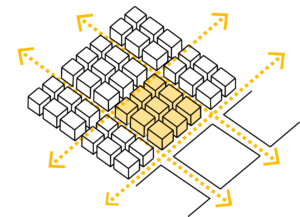
Aim
To achieve a balance between accessibility, safety and liveability in the public space. Facilitate the use of streets by different users and achieve the objectives of sustainable road safety, i.e. that infrastructures are designed according to human capacities and limitations.
To create a scenario in which the rest of the measures in this catalogue can be applied in a coherent manner.
Why?
The streets user’s driving task is made easier by a recognizable, continuous and predictable streetscape. One way to achieve this is to divide the entire network into different categories with different functions. Most accidents are caused by a combination of conflict points and excessive speeds. Therefore, the main goal must be to eliminate conflicts and, if this is impossible, to reduce speed.
The design of these streets is also important for the behaviour of different users on them. If users easily recognise the category of a street, they will be able to adapt its behaviour automatically and, if necessary, this behaviour can be conditioned by the design.
How?
We propose here to divide the streets on the basis of their main function:
• Trough road: The communication between distant points is the main function of this way, and the fluidity of the traffic a basic premise. There are no level intersections (highways).
• Distribution roads/streets: They connect the residential areas with the trough roads or two non-adjacent residential areas with each other. Different type of users flow between intersections, where they interact with each other. These would be the streets that demarcate the Superblocks.
• Access streets: These are the roads that provide access to properties, services, etc. In these streets the different traffics interact not only at intersections but also along the streets themselves (shared street). These are the streets within Supermanzanas.
The user must be able to differentiate the different types of roads in all cases.
The way in which roads of different categories relate to each other is key to road safety and the level of service. For example:
• Trough roads should not have direct access or level intersections, nor should they be within the urban area.
• On access streets the traffic function is of secondary importance, and interactions between different traffics can occur at any point, i.e. there will be no pedestrian crossings, but pedestrians will be able to walk in any area.
• The distributor streets are integrated into an intermediate category, since the through traffic can use them, but you will find level intersections.
Obviously, this is the ideal, and in in the real world we will find situations in which it will not be possible to fulfil all the requirements of a category. For example, in some cases access to public transport will conflict with the function of access on a shared street. In that case, a decision will then have to be made as to which functions should take precedence on the street.
With regard to the recognition of streets, it must be decided how to design, signpost, etc., each of the categories so that the designers involved in the projects have clear instructions on how to proceed.
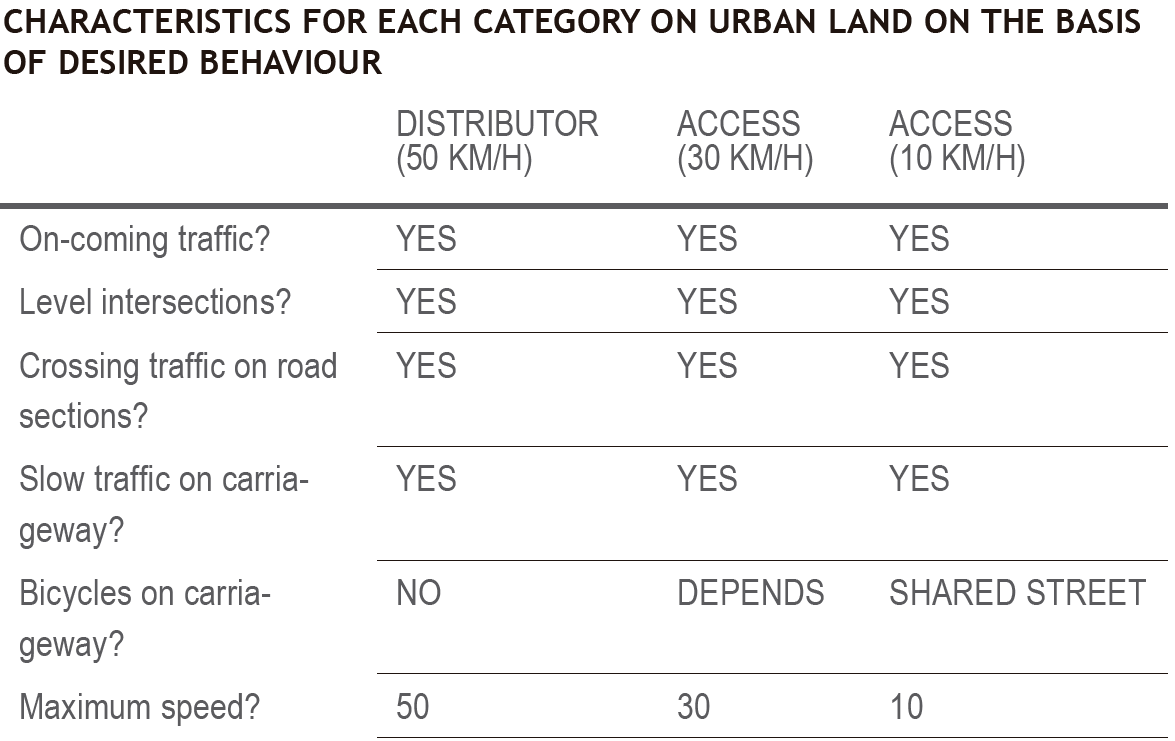
Superblock scheme, relating different traffics and the public spaces network
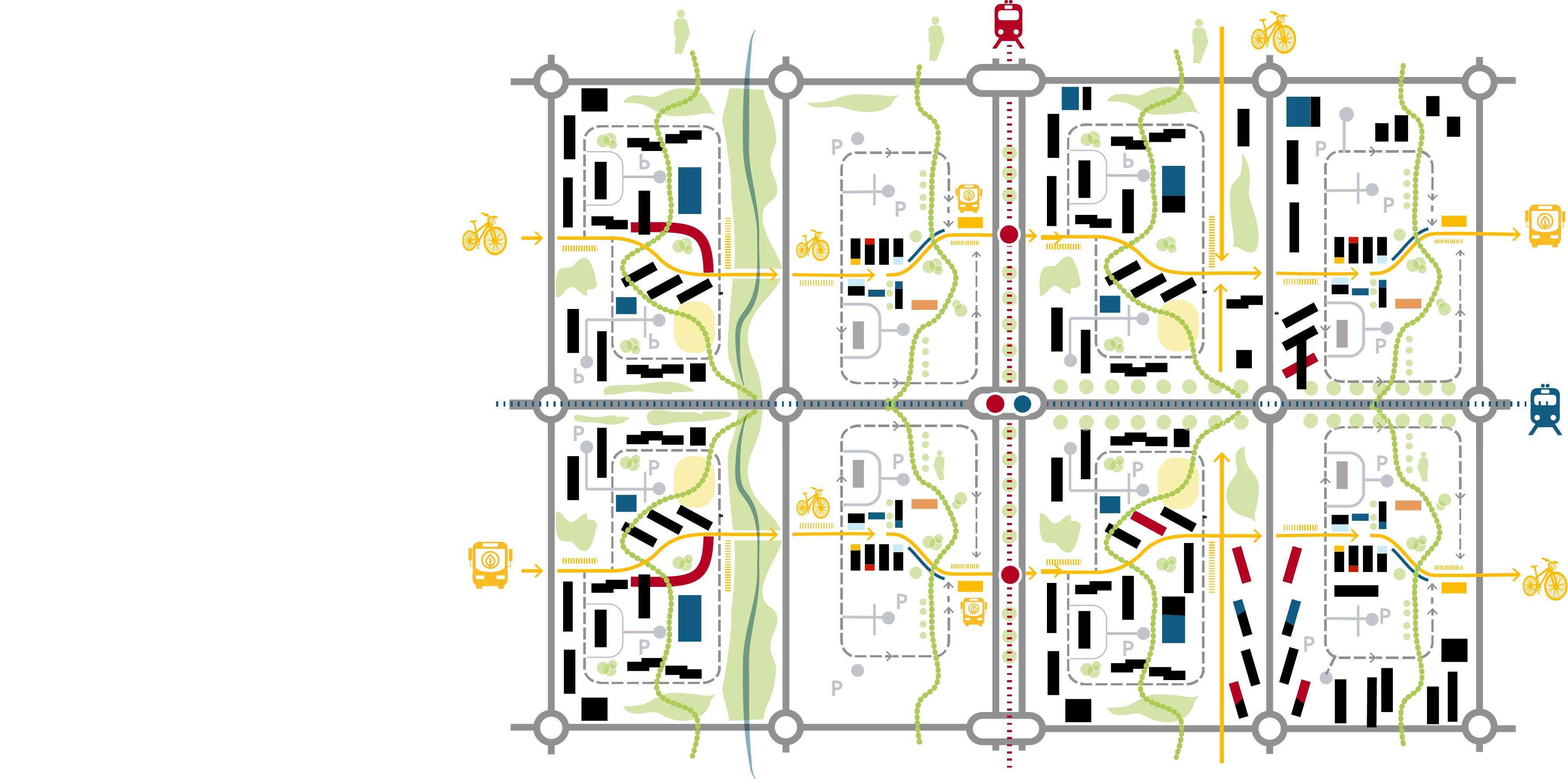
Superblocks in Barcelona Source: Ajuntament de Barcelona
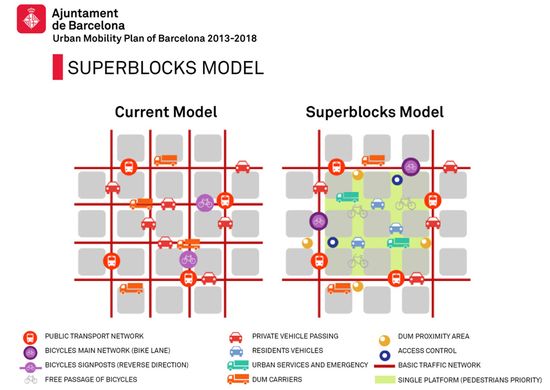
Superblocks in Barcelona Source: Source: in-house/Google
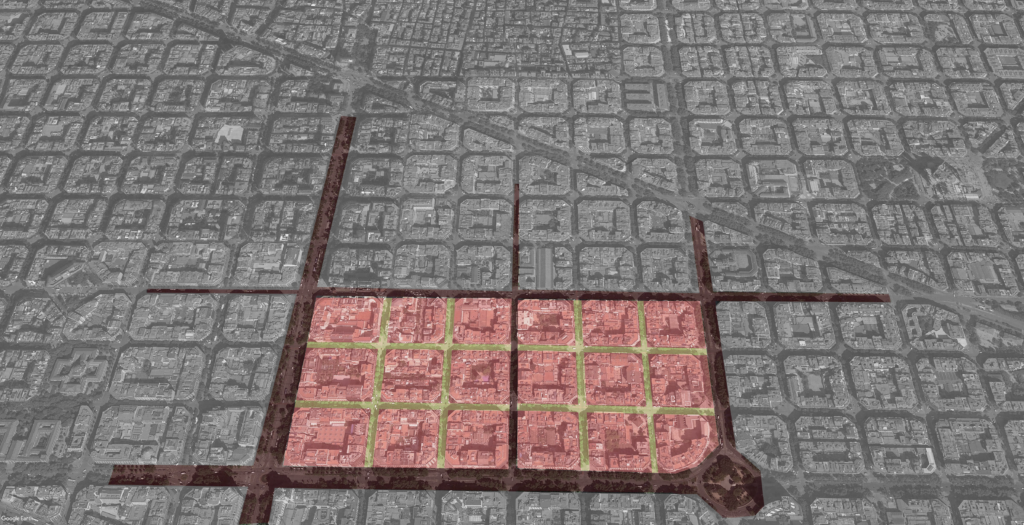
City Scale Intervention

ISSUES AFFECTED
SUITABLE FOR COMBINING WITH OTHER SOLUTIONS
Measuring elements
Strategic Solution
Works as a base to apply the rest of the solutions of the catalogue.
PLANNING LEVEL
General Planning
Development Planning
Urbanization Detailed Design
PEOPLE INVOLVED
Local Officials
State/regional government officials
Planning and design team
POSIBLE ACTIONS DEVELOPED BY THE ADMINISTRATION:
∙ Modify signposting in already developed areas
∙ Require that all developments follow the general hierarchy
∙ Develop a design, signage and street furniture guide to unify the different types of streets.
WHAT SHOULD BE CONSIDERED FOR ITS IMPLEMENTATION?
∙ Location of the major communication hubs (Accesses, Bridges, train and bus stations, etc.)
∙ Location of trip generation nodes

















